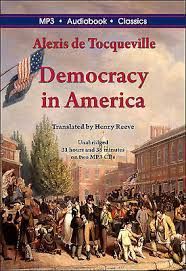The Computer’s Relevant Companion - the Knowledge Worker
PUBLISHED:
Peter Drucker wrote extensively on the computer as both the symbol and the tool of the digital revolution. His contexts, however, emphasized its effects on the economy and workforce rather than on society and populations as a whole. In fact, there is a two-way relationship between the introduction of the computer as a standard tool of industry and the effects of demographic shifts on the importance of quality over quantity. In tandem with the knowledge worker, the computer is the driving force of the future, whether in terms of society or economics.
Drucker’s reasoning for emphasizing the computer was a result of this shift in human lifestyles. If families are to have fewer children and if societies are to decline in populations as a result, the computer, or at least the iteration of technology it symbolizes, is the perfect tool to preserve economic growth and stability in the face of this predicament. Moreover, the shift is not one-way. The reason rearing children has become far more of an expense is also itself due to the nature of the economies these children will be entering upon maturity, especially in the most developed nations. Rather than menial farm or industrial work like before, these children are being prepared for service work, office work, “white-collar” work that involves increasing proportions of brainpower. This is observable in the development of the United States over the past century. Beginning with the 1920 census, which recorded the outright transition from a rural-majority to urban-majority America, the nation’s psyche became enraptured with the trappings of an industrial-service society from the rise of consumerism and credit to the automotive assembly lines of Ford and GM that employed much of the now-prospering working class6. It is not merely a coincidence that Taylorism reached its apex in the American mind around this time, as this was the first era where scientific principles could be developed and widely applied to entire industries to accentuate efficiency. While not applicable to artisans and craftsmen of the past, whose guilds and exclusivity hampered productivity and output, scientific approaches to management were finally able to be applied to a working base whose labor itself was based on scientifically derived outputs. However, most production around this time still focused on mostly menial toil and was linearly proportioned with growth in the human base that made it possible. An assembly line worker could be trained to maximize the number of wheels he could fix to a chassis per hour, but he couldn’t be trained to design new cars or to identify points of improvement in existing ones. As such, for the factory owners of this time, the fixture for economic growth rested upon hiring more workers to speed up the process.
As time passed, however, the American economy gradually shifted towards being composed of service jobs, with this transition having been solidified in the public mind with the flight of the automotive industry from the now-labeled Rust Belt to East Asia, particularly Japan, in the 1980s. This weakened the relationship between population and economic growth, but the new service jobs as well as the remaining manufacturing jobs still retained a semblance or more of training and outright repetition. Even at the peak of the American conglomerate phenomenon in the late 1960s, taking Boeing’s dominance in the aerospace industry in Southern California for example, most employees were still assemblers, engineers, and office workers who were hired and designated to do a specific task within their company. At this point, the only people who were delegated the task of independent and spontaneous decision making were management, a growing yet still small segment of the workforce.
The employment landscape now has been radically altered. Drucker already predicted it in his time, but the rise of the knowledge worker has marked a departure from all other previous forms of labor. For practically the first time in history, a significant and growing proportion of the workforce is both autonomous and a common asset in their own right. Unlike the artisans of the agrarian age who required wealthy patrons for their services to be of use and unlike the scientists of the industrial age who required direction from laboratories for their research, the knowledge worker is able to utilize both traits in such a manner and on such a scale that they have already began shifting the patterns of the American workforce, and to that extent American social life. During the Covid-19 pandemic, the widespread emergence of remote workers was in significant part due to the proliferation of knowledge workers in the nation’s service-based economy, and the continuation of this trend even after all pandemic precautions had subsided has given the corporate employee far greater leverage in employment than before. Much of this has only become a reality in due part to the computer. As well as performing the office grunt work that Drucker had observed in the 20th century, the computer has now also taken on the role of a presence augmenter, hastening communication far past what telephone or fax could ever have done with email and video calls.
Looking past the immediate implications of the computer itself on society, the subsequent shifts in workforce patterns can be argued to have as much if not more of a dramatic impact on societal constructs. Given a newfound leverage over their employment, knowledge workers have the ability to individually bargain with their employers over matters like payment incentives to the extent that only a union was capable of before. Their advent also collides with the concept of unions, which have traditionally relied on member numbers and a grasp over the “human toil” of companies that is now increasingly being replaced with machinery. The aspect of human quantity is now especially important given current demographic trends. The developing world can no longer expect the benefit of increasing populations nor the agrarian settings to stimulate such effects in the long term. Given that economic development has nearly ubiquitously been linked with simple growth in things like population, these trends will initiate steep declines in the prosperity of countries with shrinking populations. It is in this context that the value-concentrated knowledge worker will begin to play a primary role, as their autonomous nature renders them independent of the quantity-growth economic relationship. This combined with the fact that their value lies with their mind, a nearly infinite source of ideation, will mean that their presence within the workforce will likely become the new economic driver of a country, even without growth in terms of quantity.
Coming back to the computer, it is the very augmenter of productivity that separates the quantity-based output of yesteryear from the concentrated production that will dominate the future. However, its functions are limited to simple automation without its counterpart in the Digital Revolution: the knowledge worker. The synergy between the two is something governments and corporations alike must quickly understand if they are to retain their competitive edge, and it will be the subject of discussion in works succeeding this one.
Drucker, Peter. (1942) The Future of Industrial Society (1942)





